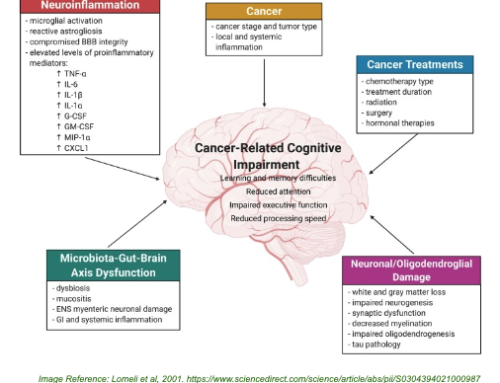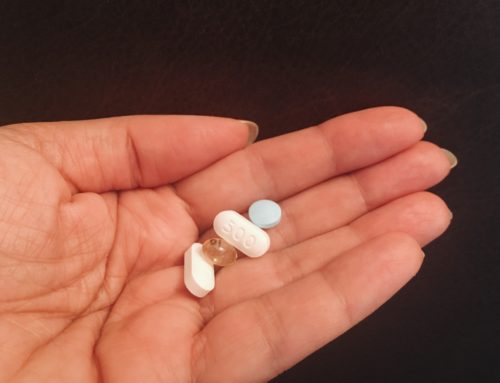Exercise offers a range of far-reaching benefits for cancer patients and is increasingly being embedded as standard practice in cancer care.
We spoke to Valion Health exercise physiologist Emma Sansalone to learn why cancer patients should continue moving through their cancer treatment and how they can work to achieve this, no matter how hard it may feel.
Emma has worked as an accredited exercise physiologist for fourteen years and provides Exercise Physiology services in Valion Health’s Fatigue Support, Cancer Support and Chronic Disease Management programs.
Emma says the importance of exercise for cancer patients cannot be overstated and they should think of it as medicine during recovery but also as a preventative in reducing the risk of another cancer diagnosis and other chronic health conditions associated with aging.
“If someone gave you a pill and said ‘take this 5 days per week and your chance of the cancer coming back is 40 per cent less and your chance of dying from that cancer is 35-50 per cent less’ you would likely take it. Exercise is medicine for cancer patients,” she said.
Emma’s position is supported by the Clinical Oncology Society of Australia whose statement on exercise and cancer care recommends that:
- exercise be viewed as a supportive therapy that can counteract the adverse effects of cancer and its treatment
- cancer teams should promote physical activity and recommend that people with cancer stick to the exercise guidelines and that
- best practice cancer care should include referral to an exercise physiologist or physio with experience in cancer care.
Exercise at every stage
Emma works with people with all types of cancer at every stage of treatment and says exercise offers a range of benefits before, during and after the active treatment phase.
“Exercise offers physical and psychological benefits during the treatment and recovery phases of cancer and has been shown to improve a patient’s quality of life. In addition, a tailored exercise plan can reduce the risk and or/severity of the physical side effects associated with the cancer and its treatments including fatigue (tiredness), nausea, lymphoedema (swelling), pain and peripheral neuropathy.
“Exercise can also reduce the risk of someone developing anxiety and depression and/or help manage these conditions,” she said.
Appropriate exercise has also been shown to prevent deconditioning and improve overall strength and balance in cancer recovery.
“Patients who are able to exercise throughout treatment and into the recovery phase have a lower risk of dying as well as a reduced risk of the cancer returning at a later stage,” she said.
Key here is the notion of appropriate exercise, and among cancer patients a one size fits all approach is not recommended, this is where it can be very helpful to work with an exercise physiologist.
“No two people with the same cancer will experience the same symptoms or side effects of treatment. Not only do we need to consider the type of cancer and treatment being given, but consideration should also be given to other medical conditions and/or injuries.
“It’s important that an exercise prescription is based on an individual’s needs and abilities and is specific to them,” said Emma.
Apart from not having a correct exercise plan, other mistakes people make when it comes to exercising include avoiding it or overdoing it, which Emma says is especially common in the recovery/post treatment phase.
“Often cancer survivors think that once treatment is completed, they can return to normal levels of activity. It’s important to remember that cancer treatment is very taxing on the body and takes time to recover from.
“Exercise needs to be started slowly and increased gradually allowing the body time to adjust without exacerbating symptoms.”
These common mistakes can be avoided by connecting with an exercise physiologist who specialises in oncology who will be able to prescribe a specific exercise program tailored to meet an individual’s unique goals.
What type of exercise is best?
Current guidelines on exercise for cancer survivors recommend some form of aerobic exercise such as walking, swimming or cycling most days of the week. Aerobic exercise has been shown to improve heart/lung health and can reduce cancer-related fatigue and the severity of treatment related side effects.
The guidelines also recommend that patients aim to do some sort of resistance training 2-3 times per week, this can easily be achieved at home using light hand weights, TheraBands or even bodyweight.
A combination of aerobic and resistance training can help survivors in the recovery phase to improve their physical fitness and function as well as their overall strength and balance.
In addition to the significant physical benefits regular exercise also improves cognitive capacity, specifically attention and memory, as well as the emotional regulation of cancer patients
“Exercise, particularly aerobic exercise such as walking, is well known for reducing stress and reducing the symptoms of anxiety and depression and moderate exercise is also a really great way to support people’s emotional regulation.”
Exercise also has a positive impact on fatigue levels. Research shows that as many as 90 per cent of people experience fatigue following a cancer diagnosis and Emma said many of her patients are scared to exercise if they are experiencing fatigue as they fear that exercise will make their fatigue worse.
“There has been a lot of research in cancer related fatigue and exercise and the results have shown that exercise is effective for managing cancer-related fatigue and that the right exercise, does not make cancer-related fatigue worse. In fact, a graduated exercise program can reduce levels of fatigue over time and improve a patient’s energy,” said Emma.
Climbing back on the wagon if you fall off
Emma says it’s common to ‘have a bad day’ when it comes to exercise, especially in the cancer recovery phase, because side effects can last for several months after the completion of treatment, and this is when ‘set back days’ can be very helpful.
“Some days exercise is just too much and that’s okay! If someone is experiencing high levels of fatigue or they haven’t got the energy to exercise, we implement a setback day and rest or do some gentle stretching and breathing exercises. Once fatigue levels settle, we can then get back to our exercise plan.”
Three short steps to a regular routine
- Start small – some exercise is better than none! Try and implement some movement into each day e.g. walk to your letterbox and back daily
2. When standing up from a chair try getting up without having to use your hands
3. Use technology – reminders on your phone or tracking devices e.g. steps per day on your watch. Set a small target and try to increase daily steps by 10-20 every few days.
Valion Health aims to support patients at every stage of their treatment and exercise is prescribed for each patient based on their needs and goals. Our model of care follows evidence-based guidelines to ensure the program is safe and effective and facilitates collaboration between us and the patient’s medical team to ensure consistency in care.



